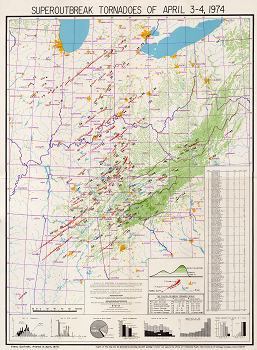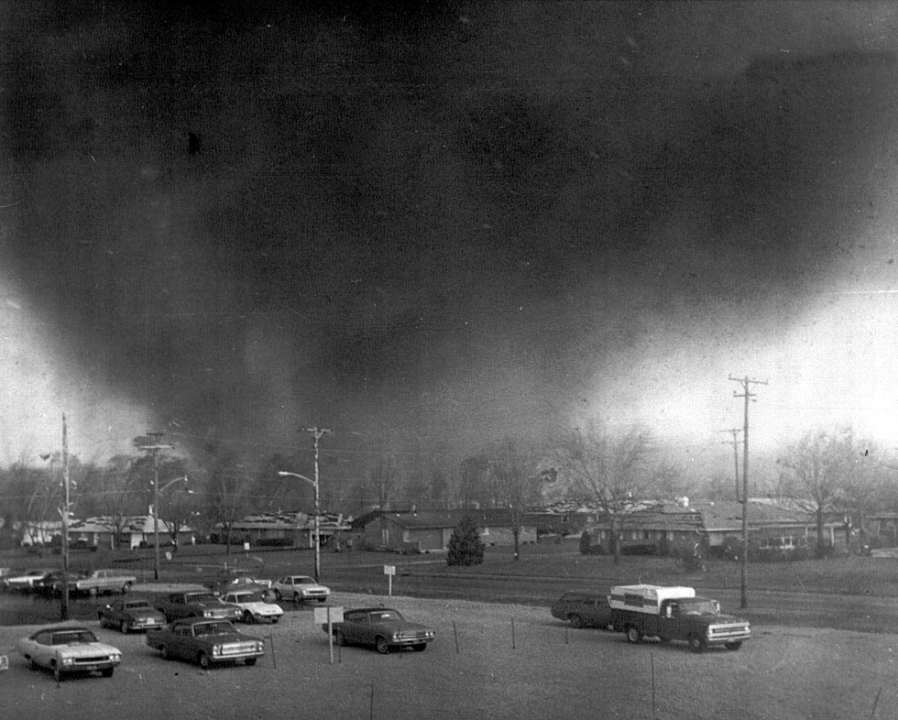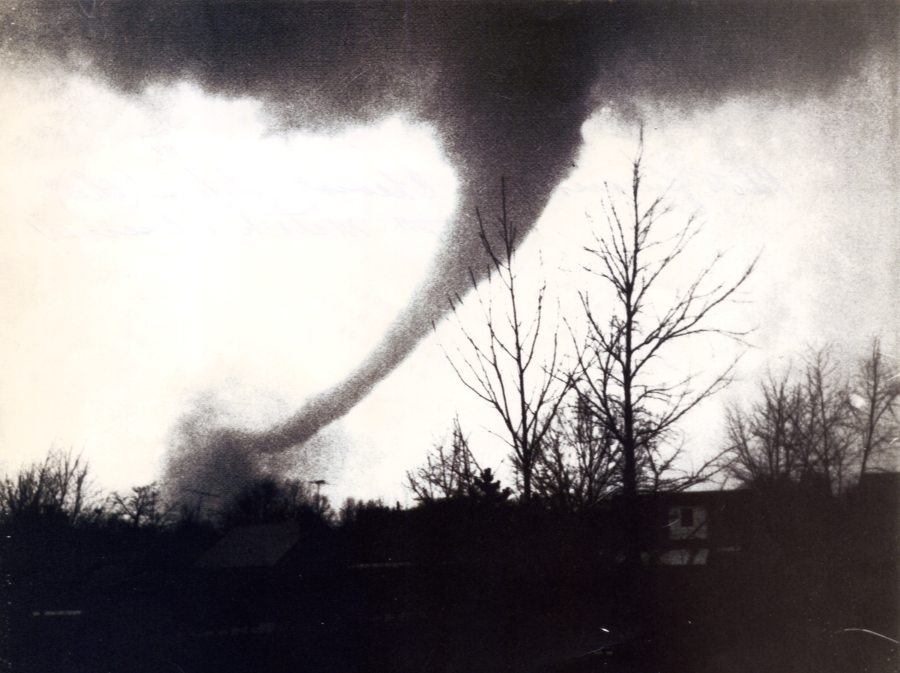50th anniversary of devastating Xenia tornado

Columbus and Central Ohio Weather
COLUMBUS, Ohio (WCMH) — On April 3-4, 1974, a massive outbreak of tornadoes caused extensive damage and loss of life in 13 states, and at Windsor, Ontario. At least 148 tornadoes touched down in 16 hours, killing 335 people and injuring more than 6,000.
The 1974 Super Outbreak produced 30 F4/F5 tornadoes (winds in excess of 207 mph) that resulted in more than $3 billion in damages (2024 dollars, adjusted for inflation). Only the April 25-28, 2011, tornado outbreak spawned more storms across 15 states from Ohio to Alabama.

More than a dozen tornadoes were confirmed in Ohio on April 3, 1974. The most powerful storm plowed through Xenia in Greene County, where an estimated 1,400 buildings, including seven schools, were damaged or destroyed.
The National Weather Service in Dayton issued the first of multiple tornado warnings at 4:10 p.m., based on hook echoes (strong circulations, with rotation) that were evident on the radar in Covington, Kentucky. The warning was promptly relayed to the Dayton office and local media for public dissemination. The Greene County community of 25,000 did not have tornado sirens at the time.
At 4:33 p.m. on April 3, 1974, a pair of funnels came together at Bellbrook in Greene County, about 70 miles southwest of Columbus.

The multiple-vortex tornado struck the center of Xenia with deadly precision had at least four subvortices at one point, captured on 8 mm film by 16-year-old Xenia resident Bruce Boyd. His rare footage was included in a 1978 NOAA documentary.
A motorist died on U.S. 42, as the storm continued northeast at 50 mph, striking Wilberforce, where three people died. Most of the buildings (75 percent) at Central State University were damaged, and 20 students were injured, though none died, according to Thomas Schmidlin, author of Thunder in the Heartland. Several structures were damaged at Wilberforce University.
The F5 tornado killed 32 persons and injured more than 1,300 in Greene County, traveling more than 32 miles, before lifting in southwestern Clark County north of South Charleston.
Most of the fatalities and injuries occurred in Xenia. Half of the city was devastated by winds approaching 300 mph, and a thousand people were left homless in the wake of the storm.
Ned DeCamp, museum director at the Madison County Historical Society Museum in London, Ohio, lived in Centerville at the time. He watched the formative tornado pass overhead, with baseball-sized hail falling in the storm.
The supercell thunderstorm continued northeast across parts of Madison and Franklin counties, spinning off two F2 tornadoes between 5 and 6 p.m. A tornado traveled 15.7 miles from southeastern Clark County through the middle of Madison County.
The funnel made intermittent contact with the ground and stripped the clock tower on top of the Madison County Courthouse, a structure dating to around 1900. The damage in downtown London was sporadic because the funnel apparently stayed slightly aloft, with a path width of 180 yards. There were no injuries.
Another touchdown occurred at New Albany, northeast of Columbus, a short time later, and damaged several homes at a time when the population was significantly smaller compared with today.
Vince Shuler, a former president of the Madison County Historical Society, described what happened to a small sign (about 18 by 24 inches) torn off a grain elevator that ended up on the first farm north of Lake Erie in Ontario, traveling about 150 miles.
Shuler recalled, “The owner of the farm contacted Shaw Elevator, and sent it to them. The Shaw family donated the sign to the (Madison County) historical society.”
A storm that formed in southeastern Indiana around 5:30 p.m. crossed the Ohio River twice, before striking Sayler Park. The F5 tornado traveled through several Cincinnati suburbs, including Mack and Dent, causing pockets of damage. Two people were killed in the storm.
Around the same time, a violent F4 tornado formed farther north at Elmwood Place and moved into Warren County, killing one person. One hundred homes were damaged in Mason. A fatality in Hyde Park was attributed to a microburst. One person died in a tornado that crossed Adams County around 8 p.m.

Ohio National Guard soldiers and airmen were joined by the Red Cross to assist in the aid and recovery efforts in the weeks following the storm, along with volunteers from across the nation. Tragically, two Ohio Air National Guardsmen died in a fire that tore through their temporary quarters in a local furniture store in Xenia on the night of April 7, 1974.
A total of 38 direct deaths occurred in Ohio in the 1974 Super Outbreak. Most of the activity was centered in the southwestern part of Ohio, although three tornadoes crossed Paulding County in the northwest.
Other storms that day caused 47 deaths in Indiana, where 21 tornadoes were recorded. A tornadic supercell traveled 121 miles from near Lafayette to north of Fort Wayne, taking 16 lives.
The modern National Weather Service spotter network and severe weather awareness programs were an outgrowth of the devastation inflicted by the fierce tornadoes on April 3, 1974. Future upgrades in satellite and radar technologies were focused on increased forecast lead times during severe weather events.
For the latest news, weather, sports, and streaming video, head to NBC4 WCMH-TV.

